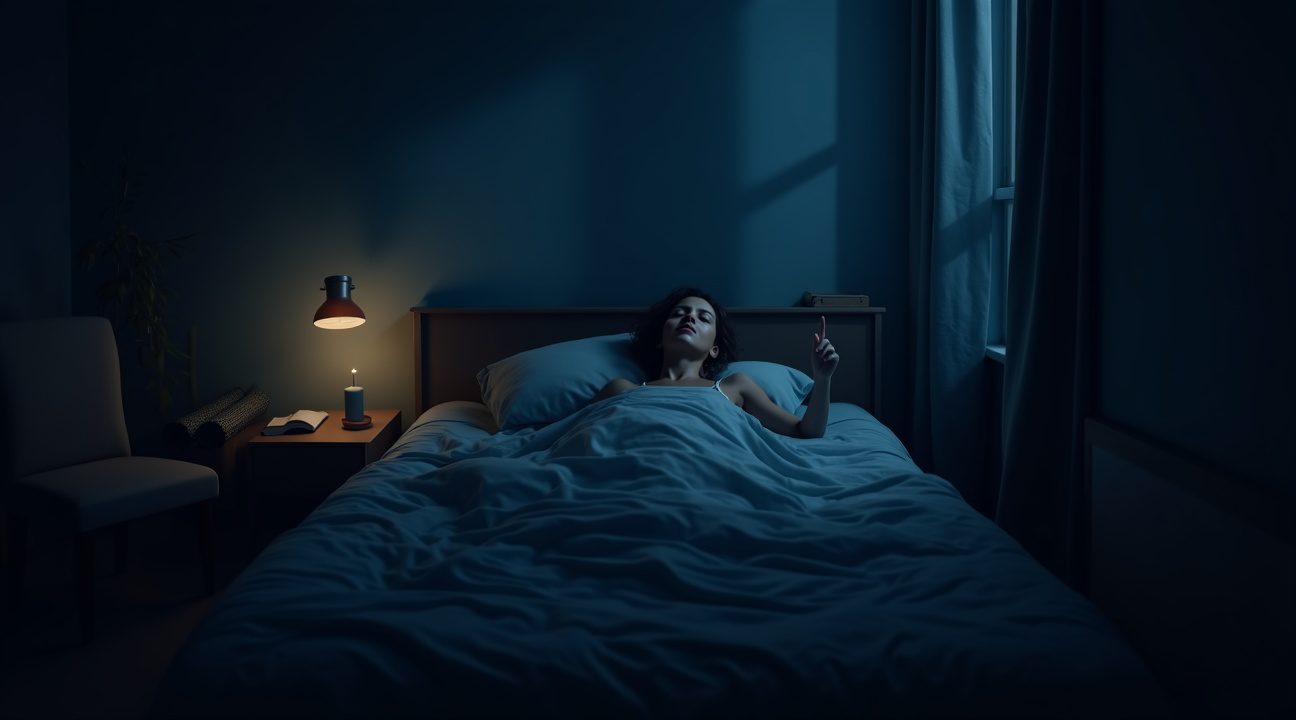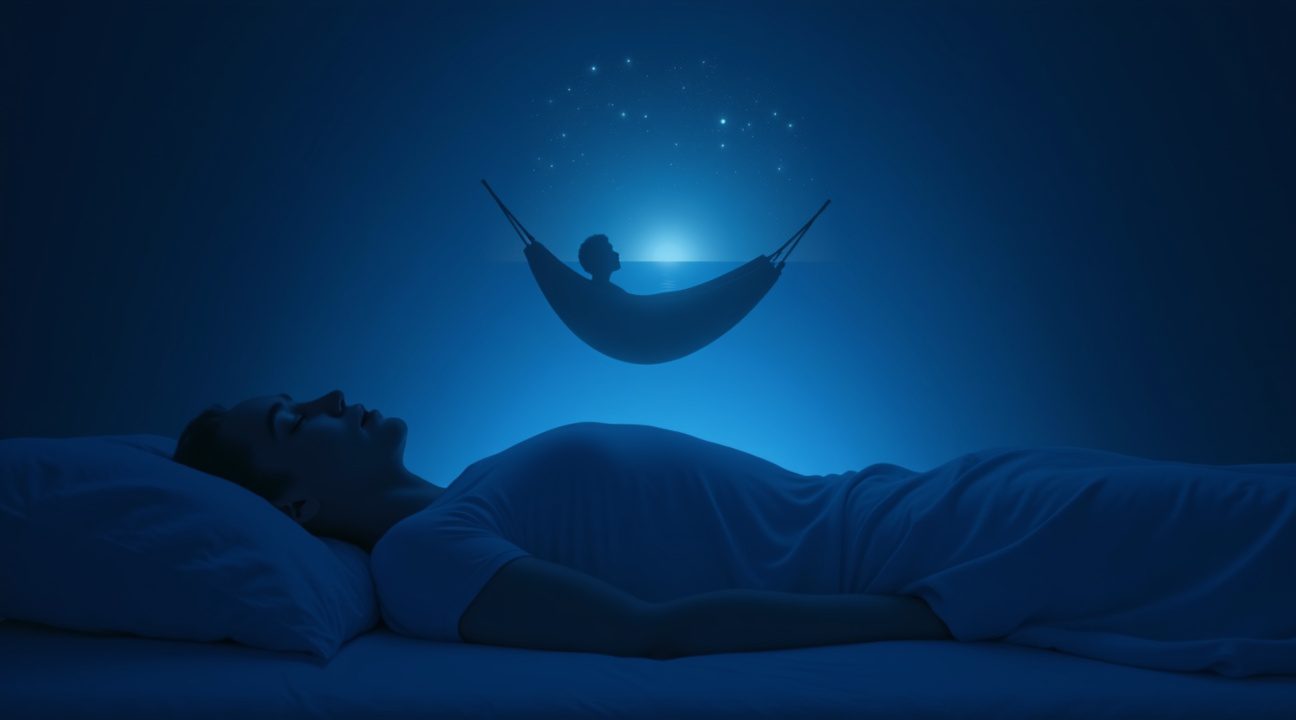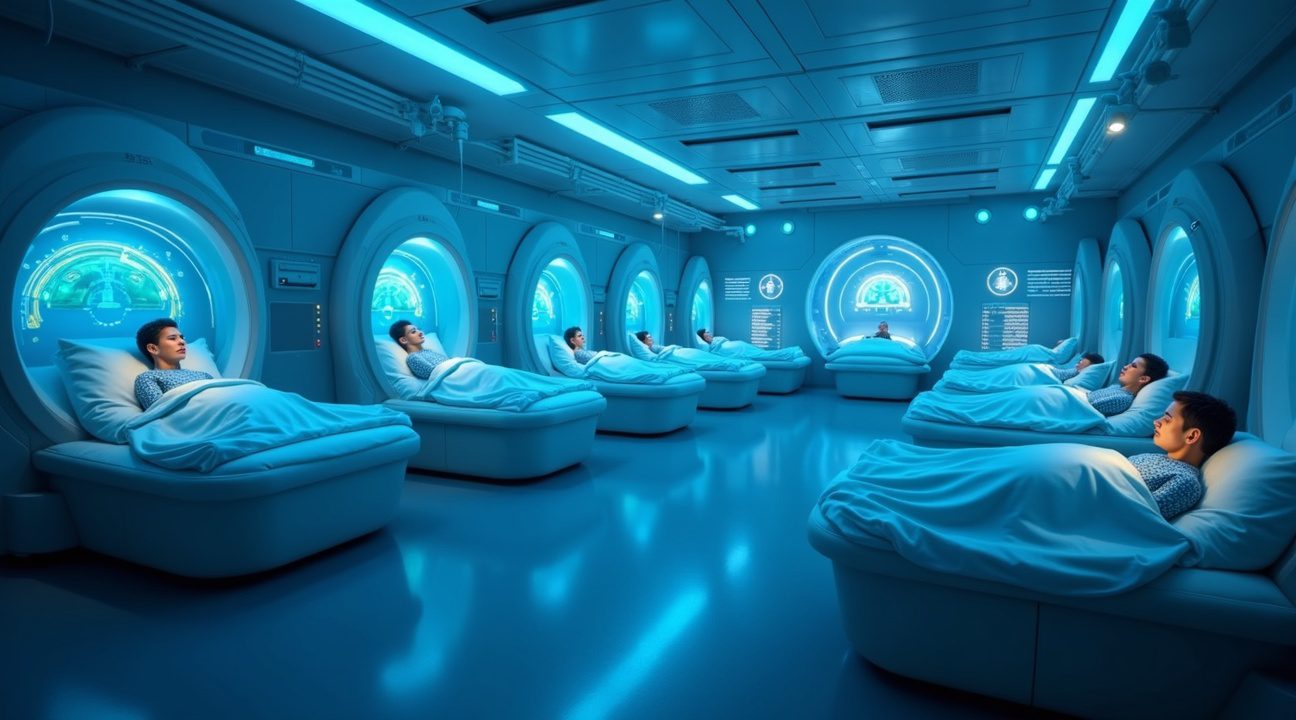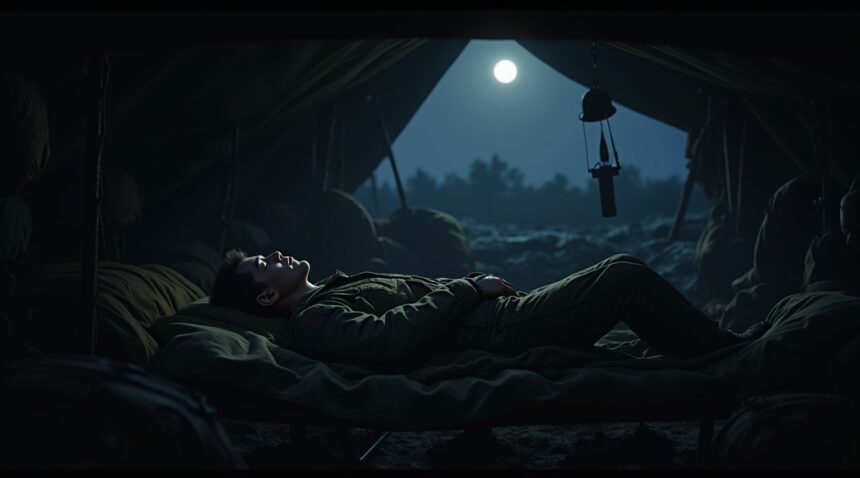The U.S. military developed a powerful sleep technique that achieves a remarkable 96% success rate after six weeks of consistent practice, allowing users to fall asleep within approximately two minutes.
This method was created to assist soldiers in falling asleep under extreme stress, in unpredictable environments, and amid combat conditions. It has now found relevance in everyday civilian life for anyone battling sleep difficulties.
Key Takeaways
- The military sleep method blends progressive muscle relaxation and mental visualization to target both physical and cognitive contributors to insomnia.
- Dedicated nightly practice for six weeks is necessary to reach the 96% effectiveness rate.
- The method involves relaxing muscles from forehead to feet, visualizing serene images, and repeating “don’t think” as a mental reset.
- The technique works without any need for tools or medications, enabling usage in nearly any setting.
- Proper sleep hygiene enhances the technique’s outcomes, with support from regular bedtime routines, cool temperature, and avoiding stimulants.
Military Origins to Modern Needs
In combat situations, where sleep deprivation poses serious threats to mission success and soldier safety, standard sleeping aids were often impractical or ineffective. The military sleep method was a strategic solution born from necessity.
Addressing Physical and Mental Activation
The technique overcomes two major layers of sleep resistance:
- Physical tension, which keeps muscles subconsciously alert.
- Mental hyperactivity, which results in racing, intrusive thoughts.
Progressive Muscle Relaxation
The practice starts with a full-body relaxation sequence. With focus and intent, practitioners tense and then relax individual muscle groups in the following order:
- Facial muscles (jaw, forehead, eyes)
- Shoulders and arms
- Chest and abdomen
- Legs and feet
Special emphasis is placed on facial tension, as it can signal stress even subconsciously. Releasing it first allows for a cascading calming effect throughout the body.
Guided Visualization and Mind Clearing
Following bodily relaxation, individuals create peaceful mental imagery, such as:
- Floating in a canoe on a still lake under starlight
- Lying in a black velvet hammock in pitch darkness
If the mind resists visual imagery, repeating the phrase “don’t think” serves as an effective method to re-center attention and quiet mental chatter.
Environmental Considerations
Optimizing the Sleep Space
- Maintain room temperatures between 65–68°F to align with natural sleep mechanisms.
- Use blackout shades or eye masks to ensure full darkness.
- Limit noise using earplugs or white noise machines, especially in urban or shared spaces.
A quiet, dark, and cool environment acts synergistically with the military technique to speed up the sleep transition process.
Routine, Practice, and Patience
The technique’s success hinges on persistence. While some may notice change in a few days, many require the full six-week practice period. Progress varies by individual depending on sleep history, current stress levels, and adherence to the full protocol.
Circadian Alignment and Behavior
- Stick to consistent bedtimes to train the body’s internal clock.
- Avoid caffeine after mid-afternoon as its effects may last up to eight hours.
- Shut off electronic screens 60 minutes before bed to reduce blue light exposure and melatonin suppression.
- Perform physical activity during the day, ideally not late in the evening.
Complementary Lifestyle Adjustments
Dietary and Substance Considerations
- Avoid large meals within three hours of bedtime, which can hinder relaxation.
- Opt for small nutrient-rich snacks like almonds or yogurt if hunger strikes.
- Beware of alcohol; while it may initiate drowsiness, it disrupts deeper sleep stages.
Positioning and Breathing
Most practitioners find lying on the back ideal for symmetrical muscle relaxation. However, side sleeping may also work with minor posture adjustments. Breathing typically slows naturally through the practice, supporting the body’s transition to sleep without intentional breath control.
Troubleshooting and Personalization
Initial discomfort, restlessness, or skepticism is common and may require mental persistence. As with physical training, the body and mind adapt with repetition.
To block environmental noise, tools like ambient sound apps or earplugs can be employed. The method’s inherent flexibility makes it especially helpful for those who travel or work unpredictable hours.
Health and Tracking Progress
Anyone with medical conditions such as anxiety, insomnia, or chronic pain should consult healthcare professionals before beginning. Simple logs help track effectiveness over time, documenting:
- Time required to fall asleep
- Sleep quality and duration
- Daily variables like stress or caffeine intake
Advanced Customizations
Experienced users often tailor their routine by changing visualizations, adding gentle background music, or modifying the muscle relaxation sequence. These adaptations retain the core method while increasing its personal resonance and effectiveness.
Conclusion: A Military Tool for Civilian Rest
The military sleep technique offers an invaluable solution to sleep difficulties, transcending its battlefield roots. By combining full-body relaxation, calming imagery, and focused mental cues, it provides lasting results for those struggling to fall asleep quickly—even in high-stress environments or unfamiliar settings. For more insights into sleep optimization, visit The Sleep Foundation, a trusted resource for sleep science and research-backed strategies.
Military Sleep Method Developed by U.S. Military
The U.S. military developed this powerful sleep technique out of necessity, recognizing that soldiers needed to fall asleep quickly despite facing extreme stress and challenging environments. Combat situations, loud noises, uncomfortable sleeping conditions, and high anxiety levels all posed significant barriers to quality rest. Military leaders understood that sleep deprivation could compromise decision-making abilities and physical performance in life-or-death situations.
Lloyd Bud Winter brought this technique to civilian attention through his 1981 book “Relax and Win: Championship Performance.” Winter, who had extensive experience working with athletes and military personnel, documented how Army soldiers successfully used this method to overcome sleep difficulties. His research revealed that the technique could transform sleep patterns when practiced consistently.
The Method’s Impressive Success Rate
After six weeks of dedicated nightly practice, this technique achieves a remarkable 96% success rate according to Winter’s findings. Practitioners can fall asleep in approximately two minutes once they master the approach. This dramatic improvement stands in stark contrast to the typical 30-minute sleep onset time that most adults experience.
The method’s effectiveness stems from its systematic approach to relaxation. Users learn to release physical tension progressively while clearing mental distractions that typically prevent sleep. I’ve found that the technique works particularly well because it addresses both physical and psychological barriers to sleep simultaneously.
What makes this approach especially valuable is its adaptability to various environments. Soldiers who mastered the military sleep method could fall asleep in foxholes, noisy barracks, or uncomfortable field conditions. This versatility translates perfectly to civilian applications, whether dealing with street noise, uncomfortable hotel beds, or racing thoughts after stressful days.
The technique requires no special equipment or supplements, making it accessible to anyone willing to invest time in learning the process. Users practice the same sequence each night, training their bodies and minds to associate these specific steps with sleep onset. Consistency proves crucial for achieving the reported success rates, as the body needs time to develop these new neural pathways.
Military personnel found that regular practice created muscle memory for relaxation, allowing them to activate the sleep response even under pressure. This conditioning effect explains why the method becomes more effective over time, with practitioners reporting faster results as they continue nightly practice sessions.
Step-by-Step Instructions to Master the Military Sleep Method
I recommend starting this powerful technique by positioning yourself flat on your back with eyes closed. Begin with deep, slow breathing to signal your body that it’s time to wind down. This initial preparation sets the foundation for everything that follows.
Progressive Muscle Relaxation Sequence
The core of this method involves systematically relaxing each muscle group in your body. I suggest following this specific sequence for optimal results:
- Start with your forehead muscles, consciously releasing any tension
- Move to your face, letting your jaw drop slightly and relaxing your cheeks
- Progress to your shoulders, allowing them to sink into your mattress
- Continue down your arms, releasing tension from your biceps to your fingertips
- Focus on your chest, letting your breathing become natural and effortless
- Work through your legs, from your thighs down to your toes
- Finish with your feet, allowing them to fall naturally to the sides
After completing the physical relaxation, shift your attention to mental imagery. I find that visualizing peaceful scenes works exceptionally well for clearing racing thoughts. Picture yourself floating gently in a canoe on calm water, or imagine resting comfortably in a hammock on a warm afternoon. These specific images help create the mental stillness necessary for rapid sleep onset.
When intrusive thoughts inevitably surface, I employ a simple but effective counter-technique. Repeat the phrase “don’t think” for exactly 10 seconds. This brief mental reset helps maintain the calm state you’ve worked to achieve.
Mastering the military sleep method requires consistent practice over approximately six weeks. Most people notice significant improvements in their ability to fall asleep quickly once they’ve committed to this timeline. With dedicated practice, you’ll develop the ability to fall asleep within two minutes of beginning the sequence.
For maximum effectiveness, I combine this technique with solid sleep hygiene practices:
- Establish a consistent bedtime routine
- Create a comfortable physical environment with proper temperature, minimal light, and a supportive mattress
The beauty of this approach lies in its simplicity and proven track record. Military personnel developed this system under high-stress conditions, making it particularly effective for civilians dealing with everyday anxiety and racing thoughts. Regular practice trains your nervous system to shift into sleep mode on command, regardless of external circumstances or internal mental chatter.

Why This Method Matters: The Military Sleep Crisis
Sleep deprivation has reached crisis levels within military ranks, creating a dangerous cycle that threatens both individual soldiers and mission success. Nearly 50% of service members report getting fewer than five hours of sleep per night, while over 60% average under six hours. These statistics paint a stark picture of a force operating under extreme sleep debt.
The consequences extend far beyond simple fatigue. Soldiers who sleep fewer than four hours experience a devastating 15-25% reduction in combat effectiveness. This decline affects critical functions like reaction time, decision-making, and situational awareness – skills that can mean the difference between life and death in combat situations.
Military culture often glorifies pushing through exhaustion, treating sleep as a luxury rather than a necessity. However, this mindset creates a counterproductive environment where performance suffers precisely when peak capability matters most. Sleep-deprived personnel make more errors, struggle with memory consolidation, and show impaired judgment under pressure.
The Broader Impact Beyond the Battlefield
The military sleep crisis extends beyond active duty concerns and reflects broader societal challenges. Approximately 15% of adults in the U.S. suffer from sleep onset insomnia, making proven methods like the military sleep method increasingly valuable for civilian applications.
Sleep deprivation wreaks havoc on multiple body systems simultaneously. Hormonal regulation becomes disrupted, affecting everything from stress response to immune function. Growth hormone production decreases, slowing recovery from physical exertion and injuries. Cortisol levels remain elevated, creating chronic stress that impairs both physical and mental resilience.
Cognitive performance suffers dramatically under sleep debt. Working memory capacity shrinks, making it harder to process complex information or maintain focus during extended operations. Creative problem-solving abilities decline, limiting tactical flexibility when facing unexpected challenges. Emotional regulation becomes compromised, leading to increased irritability and poor interpersonal dynamics within units.
Recovery processes slow significantly without adequate sleep. Muscles repair more slowly, cardiovascular systems struggle to reset, and metabolic processes become less efficient. This creates a compound effect where each sleepless night makes the next day’s challenges harder to overcome, building toward eventual breakdown.
The military recognized these critical issues and developed systematic approaches to combat sleep deprivation. Traditional methods like counting sheep or meditation often prove inadequate under high-stress conditions or when time is limited. Military personnel needed something faster, more reliable, and effective regardless of environmental conditions.
Physical readiness standards suffer when soldiers can’t recover properly. Training becomes less effective, injury rates increase, and overall unit cohesion deteriorates. Leaders must balance operational demands with the biological necessity of sleep, often in situations where both seem equally critical.
Mental health connections to sleep deprivation create additional complications. Anxiety and depression rates increase among chronically sleep-deprived personnel. Post-traumatic stress symptoms worsen without adequate rest, and resilience to future stressors decreases. Sleep becomes both a symptom and a contributing factor to psychological challenges.
The financial costs of sleep deprivation extend throughout military operations:
- Medical expenses increase due to higher injury and illness rates.
- Training time gets wasted when personnel can’t perform at capacity.
- Equipment damage rises when tired operators make preventable mistakes.
- Mission delays occur when teams can’t function effectively.
Understanding these widespread impacts helps explain why military researchers invested significant resources into developing reliable sleep techniques. The method that emerged from this necessity has proven its worth under the most demanding conditions imaginable. Its 96% success rate stems from addressing the root causes of sleep difficulty rather than simply masking symptoms.
Modern military operations require sustained performance over extended periods. Whether deployed overseas or training stateside, service members face irregular schedules, high stress, and environments that naturally disrupt sleep patterns. The need for a technique that works quickly and consistently becomes paramount when operational readiness depends on individual and collective performance.
https://www.youtube.com/watch?v=FW7Mfz6D2eQ
What Experts Say About Effectiveness and Limitations
Sleep specialists consistently emphasize that the military sleep method isn’t an overnight solution. The technique demands dedication and regular practice before users can expect meaningful results. Most experts recommend committing to the method for at least six weeks, with some individuals requiring several months of nightly practice to achieve optimal effectiveness.
Individual Variables Affect Success Rates
Personal factors play a crucial role in determining how quickly someone masters this technique. Current stress levels significantly impact the learning curve, as high anxiety can interfere with the relaxation process central to the method. Existing sleep quality also influences outcomes – those already experiencing severe insomnia may need longer to see improvements compared to individuals with mild sleep difficulties.
Environmental conditions can make or break the technique’s effectiveness. Noisy surroundings, uncomfortable temperatures, or excessive light exposure will hinder progress regardless of how well someone performs the relaxation steps. Adherence to the routine proves equally important, as skipping practice sessions or inconsistent timing can delay mastery by weeks or months.
Maximizing Results Through Complementary Practices
Experts stress that the military sleep method works best when combined with proper sleep hygiene habits. The following practices significantly enhance the technique’s effectiveness:
- Maintaining consistent bedtime and wake-up schedules
- Creating a cool, dark sleeping environment
- Avoiding caffeine and heavy meals before bedtime
- Limiting screen time in the evening hours
- Establishing a pre-sleep routine that signals relaxation
Sleep researchers note that while the average person takes approximately 30 minutes to fall asleep, the military method can reduce this time dramatically once mastered. However, they caution against expecting immediate results or viewing the technique as a standalone solution for serious sleep disorders. Professional medical evaluation remains essential for individuals with chronic insomnia or other sleep-related conditions that don’t improve with behavioral interventions alone.

The Science Behind Progressive Muscle Relaxation and Visualization
The military sleep method’s remarkable effectiveness stems from its strategic combination of physical relaxation and mental deactivation techniques. This approach targets the two primary barriers that prevent rapid sleep onset: physical tension and cognitive overactivity.
How Progressive Muscle Relaxation Works
Progressive muscle relaxation forms the physical foundation of this sleep technique. I’ve found that systematically releasing tension from each muscle group creates a cascade of physiological changes that prime the body for sleep. The process begins with facial muscles, then moves through the shoulders, arms, chest, and legs in a deliberate sequence.
When muscles release their tension, the nervous system responds by lowering cortisol levels and reducing heart rate. This physiological shift signals to the brain that it’s safe to enter sleep mode. The technique works particularly well because it addresses the muscle tension that accumulates throughout stressful days, which often keeps people tossing and turning at bedtime.
The systematic nature of this approach prevents the mind from skipping over areas of hidden tension. Many people don’t realize they’re holding stress in their jaw, shoulders, or even their toes until they consciously focus on releasing it.
The Mental Reset Through Visualization
Visualization serves as the mental component that complements the physical relaxation. This technique works by redirecting cognitive resources away from daily stressors and racing thoughts. When I guide clients through this process, I emphasize focusing on tranquil, neutral scenes that don’t trigger emotional responses.
The brain can only process a limited amount of information at once. By deliberately focusing mental energy on peaceful imagery, there’s less cognitive bandwidth available for worry, planning, or rehashing the day’s events. This mental redirection is particularly powerful for individuals whose minds typically race when they hit the pillow.
Common visualization scenarios include lying in a black velvet hammock or floating on calm water under a clear sky. These images work because they’re simple, peaceful, and don’t require complex mental processing. The goal isn’t to create elaborate fantasies but rather to provide the mind with something calm and monotonous to focus on.
Research shows that this combination approach addresses both sympathetic nervous system activation (which keeps the body alert) and cognitive arousal (which keeps the mind active). The military sleep method leverages this dual-action approach to achieve its impressive success rate.
The technique proves especially effective in challenging sleep environments because it doesn’t rely on external conditions. Whether someone’s trying to sleep in a noisy barracks, an uncomfortable position, or during daylight hours, the internal focus on muscle relaxation and mental imagery remains constant.
Military personnel originally developed this method because they needed reliable sleep in unpredictable circumstances. Combat situations, irregular schedules, and high-stress environments all worked against natural sleep patterns. The progressive muscle relaxation and visualization combination provided a portable solution that didn’t depend on ideal sleeping conditions.
The beauty of this scientific approach lies in its simplicity. Unlike complex sleep hygiene protocols that require specific environments or lengthy routines, this method can be deployed anywhere within minutes. The technique trains the body and mind to transition into sleep mode on command, regardless of external stressors or environmental challenges.
Both components work synergistically — as physical tension releases, mental relaxation becomes easier to achieve. Similarly, as the mind settles through visualization, physical relaxation deepens. This positive feedback loop accelerates the transition from wakefulness to sleep, often achieving results within two to six minutes of practice.
The method’s effectiveness increases with repetition as the nervous system learns to recognize and respond to these specific relaxation cues. Regular practitioners often find they can trigger sleepiness simply by beginning the muscle relaxation sequence, as their bodies have been conditioned to associate these actions with sleep onset.

Future Innovations in Military Sleep Solutions
Military sleep technology continues advancing rapidly as research institutions push the boundaries of what’s possible for enhanced rest and recovery. Johns Hopkins APL leads the charge in developing sophisticated smart tools that promise to revolutionize how service members approach sleep regulation. These cutting-edge devices utilize neural network-based algorithms to monitor and optimize sleep patterns in real-time.
Smart Technology Integration
The latest innovations focus on creating intelligent systems that can adapt to individual sleep needs and environmental conditions. These advanced tools analyze multiple data points including:
- Heart rate variability and respiratory patterns
- Environmental factors like temperature and noise levels
- Stress indicators and cortisol fluctuations
- Sleep cycle disruptions and recovery periods
- Performance metrics and cognitive readiness scores
Smart wearables now incorporate machine learning capabilities that learn from each user’s unique sleep patterns. These devices can predict optimal sleep timing and suggest interventions before sleep quality deteriorates. Advanced sensors detect micro-movements and physiological changes that indicate the onset of sleep disorders or stress-related insomnia.
Neural network technology enables these systems to process vast amounts of sleep data and identify patterns that human analysis might miss. Military researchers have discovered that personalized sleep interventions work significantly better than one-size-fits-all approaches. Each device creates a unique sleep profile for its user, continuously refining recommendations based on performance outcomes.
The technology extends beyond simple monitoring to active intervention. Smart sleep systems can automatically adjust room temperature, lighting conditions, and even play specific sound frequencies that promote deeper sleep stages. Some experimental devices use gentle electrical stimulation to encourage the brain’s natural sleep processes.
Johns Hopkins APL’s research demonstrates that these innovations can reduce the time needed to fall asleep by up to 40% compared to traditional methods. Military personnel using these advanced systems report improved cognitive function and faster recovery from sleep debt. The military sleep method benefits significantly from technological enhancement, with success rates climbing even higher when combined with smart monitoring.
Future applications extend far beyond military use. Healthcare systems are already exploring how these sleep technologies can help civilian populations struggling with chronic insomnia and sleep disorders. The same neural networks that help soldiers maintain readiness in challenging environments can assist shift workers, medical professionals, and anyone facing irregular sleep schedules.
Research continues into biomarker detection that could predict sleep problems before they manifest. Scientists are developing sensors that can identify stress hormones in real-time, allowing for immediate sleep intervention strategies. These predictive capabilities could prevent the cascade of health issues associated with chronic sleep deprivation.
Mental recovery enhancement represents another frontier in military sleep innovation. Advanced systems now incorporate cognitive training elements that work during specific sleep phases to improve memory consolidation and stress processing. This dual approach addresses both the quantity and quality of rest, ensuring maximum recovery value from limited sleep opportunities.
The implications for military readiness are substantial. Units equipped with these advanced sleep technologies show improved decision-making capabilities, faster reaction times, and enhanced physical performance. Combat effectiveness increases measurably when personnel maintain optimal sleep patterns through technological assistance.
Clinical trials reveal that these innovations can break the cycle of chronic sleep deprivation that affects approximately 85% of active-duty military personnel. The technology adapts to deployment conditions, high-stress situations, and irregular schedules that traditionally disrupt healthy sleep patterns.
Ongoing research focuses on miniaturization and energy efficiency to make these systems practical for field deployment. Future devices will be lighter, more durable, and capable of operating for extended periods without external power sources. Integration with existing military equipment ensures seamless adoption without adding burden to service members.
These technological advances represent a fundamental shift in how military organizations approach sleep health. Rather than treating sleep as a luxury or afterthought, these innovations position quality rest as a critical component of operational effectiveness and personnel well-being.

Sources:
Better Humans, “How To Fall Asleep in 2 Minutes: The Military Sleep Method”
Tom’s Guide, “Yes, the Military Sleep Method can help you fall asleep fast, but there’s a huge catch”
Cleveland Clinic, “What Is the Military Sleep Method? The Steps”
AJC, “Experts not convinced this military trick is answer to your sleep problem”
Sleep Foundation, “Sleep in the Military”
PMC, “Sleep in the United States Military”
Johns Hopkins APL, “APL Tackles Military Sleep Deprivation With Innovative Smart Tool”


